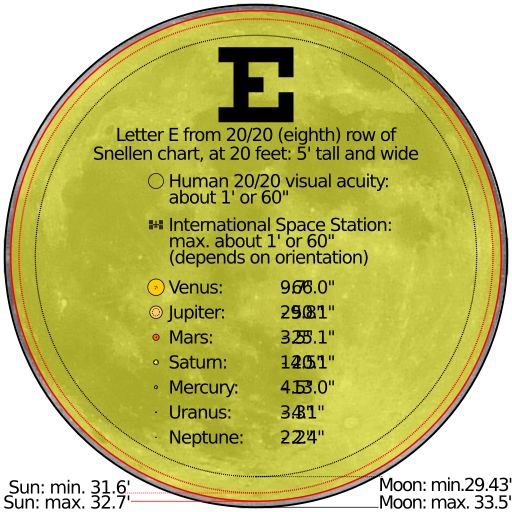Image: Comparison angular diameter solar system

Description: Comparison of angular diameter of the Sun, Moon and planets with the International Space Station (as seen from the surface of the Earth), the 20/20 row of the Snellen eye chart at the proper viewing distance and typical human visual acuity. The dotted circles represent the minimum angular size (when the celestial bodies are farthest away) and solid circles represent the maximum angular size (when they are nearest). ' denotes arcminutes and " denotes arcseconds. To get a true representation of the sizes, view the image at a distance of 103 [=1tan(33.560×π180)]{\displaystyle {\begin{bmatrix}={\tfrac {1}{\tan {\big (}{\tfrac {33.5}{60}}\times {\tfrac {\pi }{180}}{\big )}}}\end{bmatrix}}} times the width of the largest (Moon: max.) circle. For example, if this circle is 10 cm wide on your monitor, view it from 10.3 m away. Planetary angular diameters are from factsheets at http://nssdc.gsfc.nasa.gov/planetary/factsheet/ and Sun/Moon ones are from http://education.gsfc.nasa.gov/eclipse/pages/faq.html .
Title: Comparison angular diameter solar system
Credit: Own work
Author: Cmglee
Usage Terms: Creative Commons Attribution-Share Alike 3.0
License: CC BY-SA 3.0
License Link: https://creativecommons.org/licenses/by-sa/3.0
Attribution Required?: Yes
Image usage
The following 2 pages link to this image:

